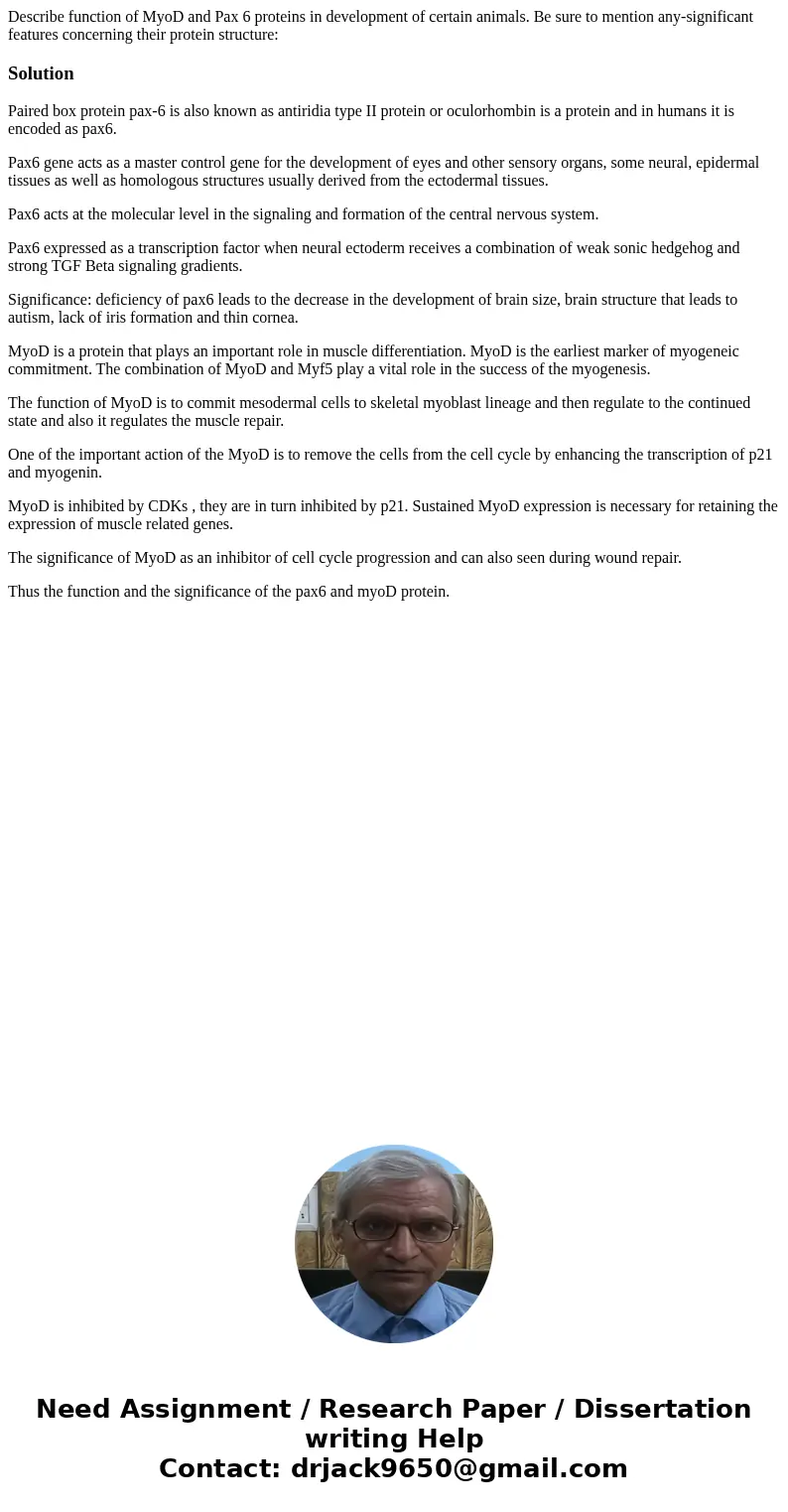Describe function of MyoD and Pax 6 proteins in development
Solution
Paired box protein pax-6 is also known as antiridia type II protein or oculorhombin is a protein and in humans it is encoded as pax6.
Pax6 gene acts as a master control gene for the development of eyes and other sensory organs, some neural, epidermal tissues as well as homologous structures usually derived from the ectodermal tissues.
Pax6 acts at the molecular level in the signaling and formation of the central nervous system.
Pax6 expressed as a transcription factor when neural ectoderm receives a combination of weak sonic hedgehog and strong TGF Beta signaling gradients.
Significance: deficiency of pax6 leads to the decrease in the development of brain size, brain structure that leads to autism, lack of iris formation and thin cornea.
MyoD is a protein that plays an important role in muscle differentiation. MyoD is the earliest marker of myogeneic commitment. The combination of MyoD and Myf5 play a vital role in the success of the myogenesis.
The function of MyoD is to commit mesodermal cells to skeletal myoblast lineage and then regulate to the continued state and also it regulates the muscle repair.
One of the important action of the MyoD is to remove the cells from the cell cycle by enhancing the transcription of p21 and myogenin.
MyoD is inhibited by CDKs , they are in turn inhibited by p21. Sustained MyoD expression is necessary for retaining the expression of muscle related genes.
The significance of MyoD as an inhibitor of cell cycle progression and can also seen during wound repair.
Thus the function and the significance of the pax6 and myoD protein.

 Homework Sourse
Homework Sourse